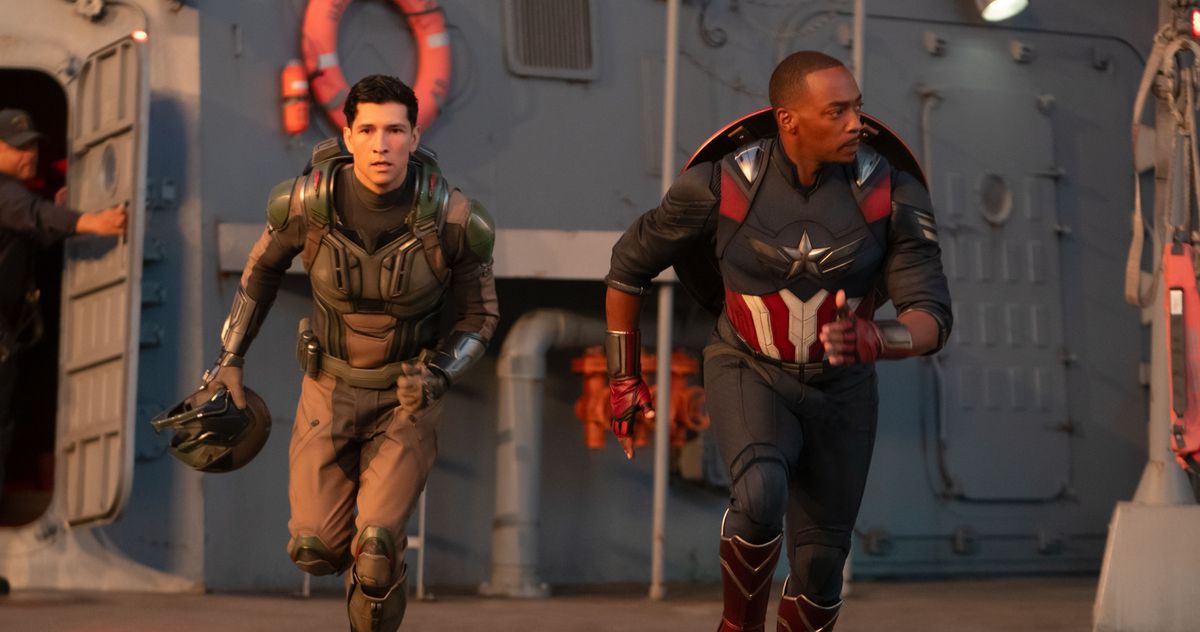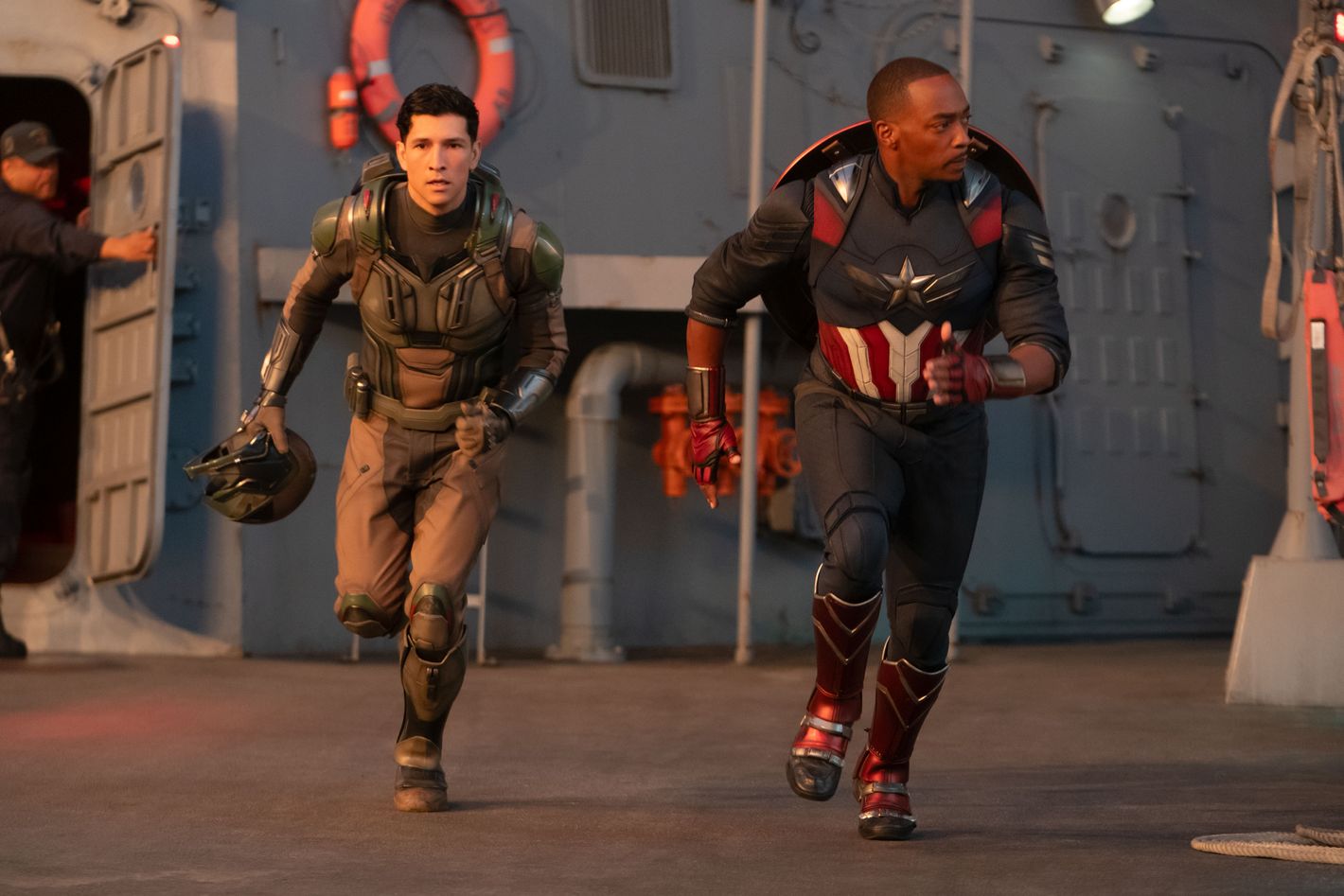Captain America: Brave New World Has Marvel’s Lamest Post-Credits Scene Yet
The studio seems to have lost its handle on the marketing art form it helped create.


Marvel Studios has turned sitting through a movie’s credits into a competitive sport. Franchises you never thought would have (or need) post-credits teasers now pump them out regularly — Transformers x G.I. Joe, anyone? — but at one point, the MCU had perfected the formula. Every so often, Nick Fury would show up and ask a new hero to join his impending team, and on occasion, a major villain or two would be teased; think Thanos’s evil grin, or superpowered twins Wanda and Pietro Maximoff lying in wait behind bars. Since about 2021, though, the studio seems to have lost its grasp on the marketing art form it helped create. Exhibit A: the teaser that totally flatlines at the end of Captain America: Brave New World.
Usually, these stingers feature either new characters (Thor!), new places (Wakanda!), or new concepts (Multiversal incursions!). At the very least, they function as jokes. The one at the end of Brave New World does none of the above. It features the film’s hyper-intelligent villain, The Leader a.k.a. Samuel Sterns (Tim Blake Nelson, returning to the role he first played in the Edward Norton-starring The Incredible Hulk). Once the gamma-irradiated super genius is defeated, he ends up in the mid-ocean prison complex known as the Raft, which this film brings back for the first time since it was introduced in Captain America: Civil War. The new Captain America, Sam Wilson (Anthony Mackie) pays him a visit for unclear reasons, only for Sterns to then tease — drum roll, please — the multiverse.
As in, the very same connected series of alternate universes we’ve been watching onscreen for four whole years, in shows like Loki and movies like Spider-Man: No Way Home, Doctor Strange in the Multiverse of Madness, and Deadpool & Wolverine. That multiverse. Sterns tells Wilson that while they don’t share a sense of humor, they do share the same world, before cryptically teasing, “It’s coming. I’ve seen it in the probabilities, I’ve seen it plain as day. All you heroes protecting this world, you think you’re the only ones? You think this is the only world?”
His dialogue echoes that of Nick Fury (Samuel L. Jackson) in Marvel’s first-ever credit stinger post–Iron Man, in which he tells Tony Stark (Robert Downey Jr.), “You think you’re the only superhero in the world? Mr. Stark, you’ve become part of a bigger universe. You just don’t know it yet.” But Fury was teasing superhero crossovers en route to a then-unprecedented Avengers team-up. All Sterns is doing is telling the audience what they already know — and what they seem to have already grown tired of, too, if the box-office take for Ant-Man and the Wasp: Quantumania is any indication. (That film was centered around a now-discarded multiverse villain.) Wilson responds to Sterns with a plain non-reaction, almost like Mackie wasn’t given a line to react to on set.
It’s a tag for the sake of a tag, as egregious as the ending of Batman v Superman: Dawn of Justice, in which Jesse Eisenberg’s imprisoned Lex Luthor reveals to the Caped Crusader (Ben Affleck) that “he” is coming, without specifying who he means. (Comics faithfuls intuited that this referred to the villain Darkseid, though nothing in the movie itself was really connected to him.) Sterns is talking about something the Avengers have been dealing with, since at least the post-credits scene of 2021’s Shang-Chi: The Legend of the Ten Rings, when the heroes speculated that the titular rings were sending some sort of otherworldly signal.
Had Sterns’s monologue followed a film like, say, Black Widow — released in 2020 when the multiverse was just a glimmer in Kevin Feige’s eye — it would have at least made for a fun preview of things to come. But it’s been two years since the multiverse-centric villain Kang was last seen in Quantumania, and he’s already seemingly been replaced by Robert Downey Jr.’s Doctor Doom. Several films at this point have featured the cross-pollination of characters from different realities. Simply mentioning that more of this might happen isn’t much of a promise.
If nothing else, Sterns’s tease is a reminder that this latest phase of the MCU is still grasping for some purpose or cohesion. It’s an attempt at reassurance that the series will finally figure things out, but it’s hard to take the movie at its word when the MCU’s multiverse M.O. until now has mostly involved cameos and slightly tilt-shifted versions of familiar characters, without really delving into the narrative possibilities presented by alternate timelines. Upcoming films like Fantastic Four: First Steps and Avengers: Doomsday will probably also rely on the concept, but unless they take a novel approach, it’s going to be hard for audiences to stay invested. Then again, when even the hero of Brave New World seems nonplussed at the idea of more multiversal movies, is the lack of investment really any surprise?








